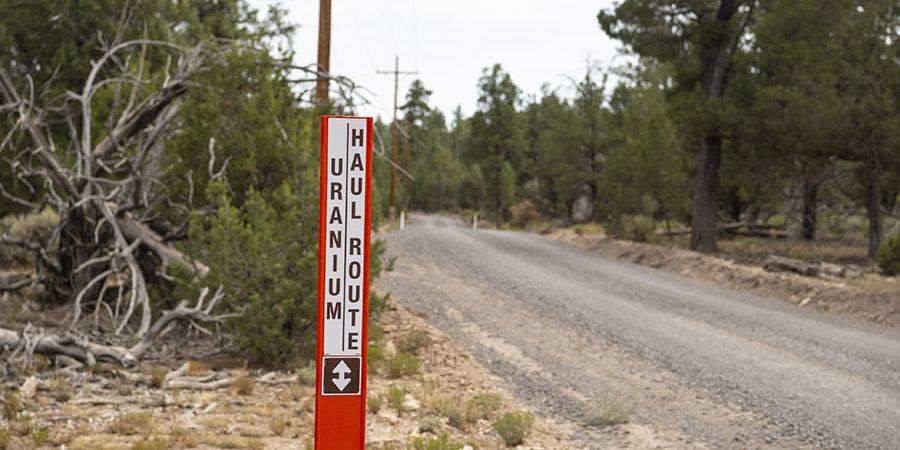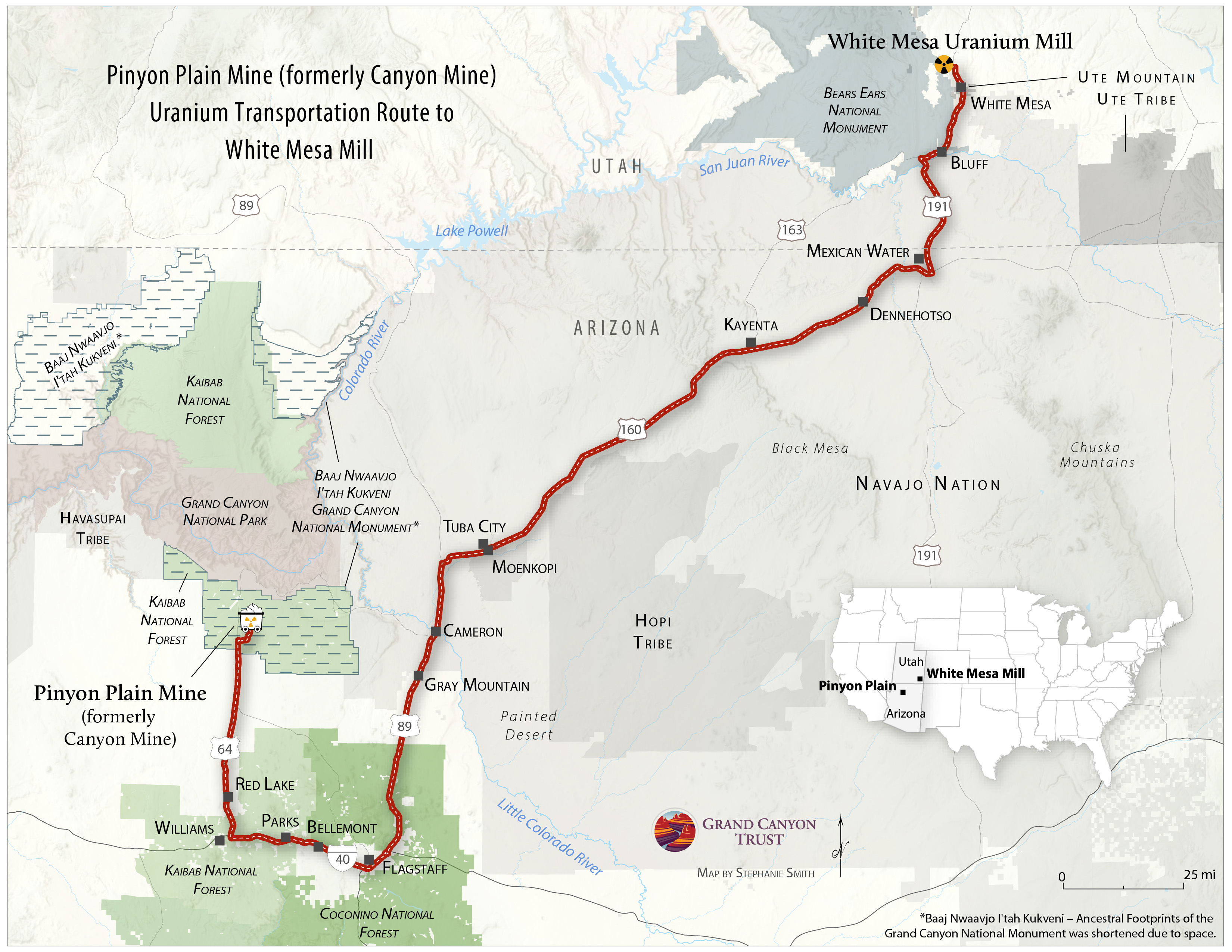
Trucks hauling uranium ore are once again traveling from Pinyon Plain uranium mine near the Grand Canyon to the White Mesa Mill, despite strong opposition from tribes and communities along the haul route.
Uranium trucks on the road near the Grand Canyon
When Energy Fuels Resources, the uranium company that owns and operates the controversial Canyon Mine (renamed Pinyon Plain Mine) near Grand Canyon National Park, began trucking uranium ore from the mine to the White Mesa uranium mill in Utah for the first time in July 2024, it caused an uproar.
Tribal governments, local governments, communities, and concerned citizens along the haul route were furious, including the Navajo Nation, across whose lands the trucks were traveling.
Given the public outcry and strong criticism from the Navajo Nation, the Havasupai Tribe, and others, Arizona Governor Katie Hobbs stepped in. She encouraged the company to suspend hauling and enter into discussions with the Navajo Nation. On January 29, 2025, after months of closed-door negotiations, the company announced an agreement. It said it would resume uranium hauling in February 2025. Soon, uranium trucks began running again. Navajo citizens and other community members along the haul route continue to protest.
The agreement also included a promise to move uranium waste from the Navajo Nation to the White Mesa Mill, despite opposition from the nearby White Mesa Ute community.
The 300-mile uranium haul route crosses tribal lands
Many Grand Canyon region tribes oppose uranium mining on their ancestral lands near the Grand Canyon. Pinyon Plain Mine is located inside the boundaries of Baaj Nwaavjo I’tah Kukveni – Ancestral Footprints of the Grand Canyon National Monument. The haul route from the mine to the White Mesa Mill, where the uranium ore is sent for processing, crosses the Navajo Reservation, the Hopi Reservation, and the Ute Mountain Ute Reservation, as well as Native American ancestral homelands. This includes the homelands of many of the 13 tribes of the Grand Canyon Tribal Coalition, who advocated for the monument’s designation.
Navajo Nation reaches agreement with uranium company about hauling
On February 12, 2025 the Navajo Nation acting attorney general gave a report to the Navajo Nation Resources and Development Committee on the uranium ore transport agreement signed by the Navajo Nation and Energy Fuels Resources. According to the attorney general, the agreement adds protections including limiting transportation to specified hours of the day. It also introduces more stringent insurance, driver qualification, and training standards. And it further mandates that uranium truck drivers obtain Navajo Nation transportation licenses, and that the company use state-of-the-art cover systems to prevent the spread of radioactive dust.
Notably, the agreement also includes a provision for Energy Fuels Resources to transport 10,000 tons (2.2 million pounds) of “uranium waste” from abandoned uranium mines on the Navajo Nation to the White Mesa Mill for processing and disposal. Over 700 million pounds of radioactive waste are already languishing in the waste pits at the White Mesa Mill. The nearby White Mesa Ute community opposes more waste being sent to the mill. The community is fighting to protect their clean water and way of life.
About the deal
Some in Navajo Nation leadership have reacted to community backlash by expressing that the Navajo Nation government did not view signing this agreement as their ideal choice, but as the best option available to them. Navajo Nation Environmental Protection Agency Director Stephen Etsitty explained to the press that the Navajo Nation is limited legally in what it can control when it comes to the federal and state highways the haul trucks travel on. Director Etsitty referred specifically to the doctrine of federal pre-emption, which is the idea that when two bodies of law conflict, the higher legal authority takes priority. Rather than risk losing in court and facing hauling resuming on others’ terms, the Navajo Nation decided to pursue a deal that it felt would benefit them.
Havasupai Tribe voices strong opposition to uranium hauling
The Havasupai Tribe has condemned the hauling. The tribe said in a statement: “We are deeply disappointed in EFRI [the mining company] and the Navajo Nation for not including us in their discussions that ultimately led to the dangerous decision to allow hauling of radioactive material across our aboriginal lands.” The statement continued, “We are further disheartened that state and federal agencies and officials charged to protect this sacred land stand on the sidelines not saying a word.”
As of right now, uranium trucks are traveling from Pinyon Plain Mine to the White Mesa Mill, along a risky haul route.


